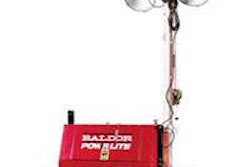The big news of 2007
By Kirk Landers
One of the hallmarks of the end of each calendar year is the note from the Construction Writers Association to its members asking us to list the five most significant news stories in the construction industry for the past year.
Participating in the survey is as much fun as reading the final story that CWA releases. We’ll publish the CWA story when we get it. Meanwhile, here are the five items I submitted.
1. The housing bust. It touches everything, from the general economy to demand for aggregates to demand for roads and parking lots. What’s extremely uncomfortable for me is the thought that we haven’t yet felt the full impact of the housing bust in the rest of the construction industry and the general economy. Residential construction has been the backbone of the general economy for a decade or so, and its current weakness is expected by most experts to continue for another couple of years. What will propel the construction and the general economy over that long haul?
2. The spending bill. It was passed by Congress in December and signed by President Bush. The road industry celebrated the fact that the bill included full federal funding for roads and bridges, which is a good thing. The bill also contained thousands of earmarks, which is a bad thing and may be the most significant aspect of the bill. Whether you are conservative or liberal, if you are not a member of Congress you have to be aghast at how out of control the pork barreling has become. It has particular significance to heavy construction interests because Congress will begin debating the next transportation bill next year and one of the most legitimate criticisms of the current bill is the waste represented by the 6,000-plus earmarks attached to it. It’s not just that some of the earmarks are for unworthy projects, it’s also that many of the earmarks are for projects that will never get authorized, so the money never gets used.
3. Diesel fuel prices. For the first time in my 20-plus years in heavy construction, diesel fuel prices are so high that even heavy equipment fleets and short-haul construction truckers are looking for ways to improve fuel efficiency. I can’t find anyone who thinks prices are coming down significantly in the foreseeable future, so I expect to see fuel efficiency get more priority among equipment buyers and specifiers — it will affect the size of the machines they buy and it will introduce new complexity in trying to calculate the best blend of power (for productivity) and ownership and operating costs.
4. High oil prices. All road construction materials have escalated in price in the past two years, but asphalt’s ascent has been especially steep because of the run-up in crude oil prices. This has reduced the price differential between asphalt and concrete, and people from the concrete side of the business claim to be making inroads on projects such as overlays which have been traditionally dominated by asphalt. The swing is not huge, so far, but it has ratcheted up the competition in the road industry which is a good thing for highway users and taxpayers.
5. The completion of the Big Dig. For the past decade, this project has gotten a steady stream of negative press…for mostly good reasons. Considerably less coverage has been given to the main question, though: was it worth it? With the work finally wrapped up, some perspective may finally be brought to the project. One national television network marked the completion of it by describing its unique engineering achievements.










